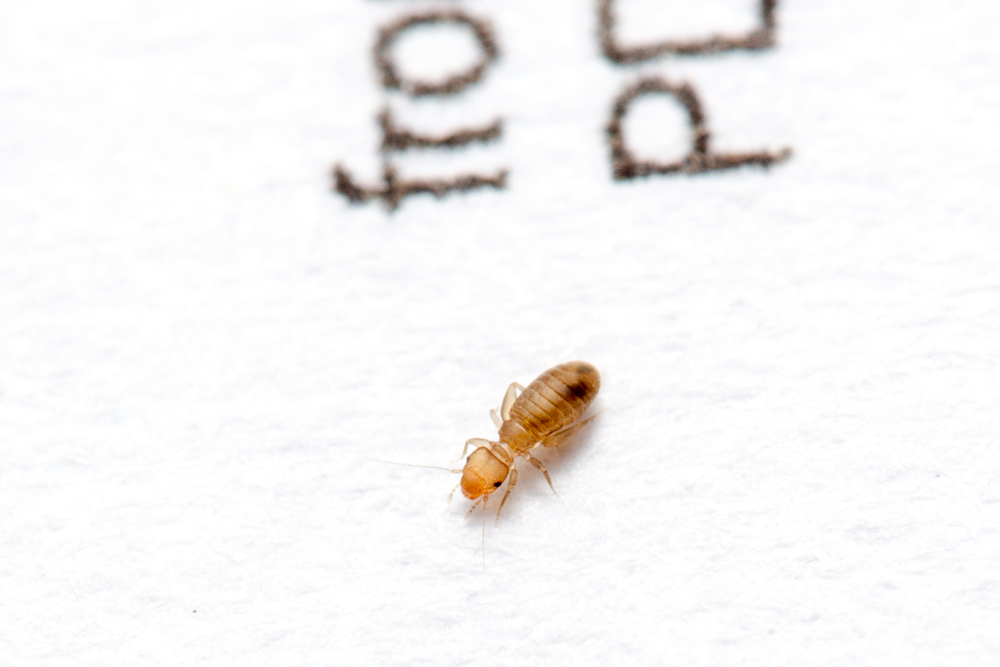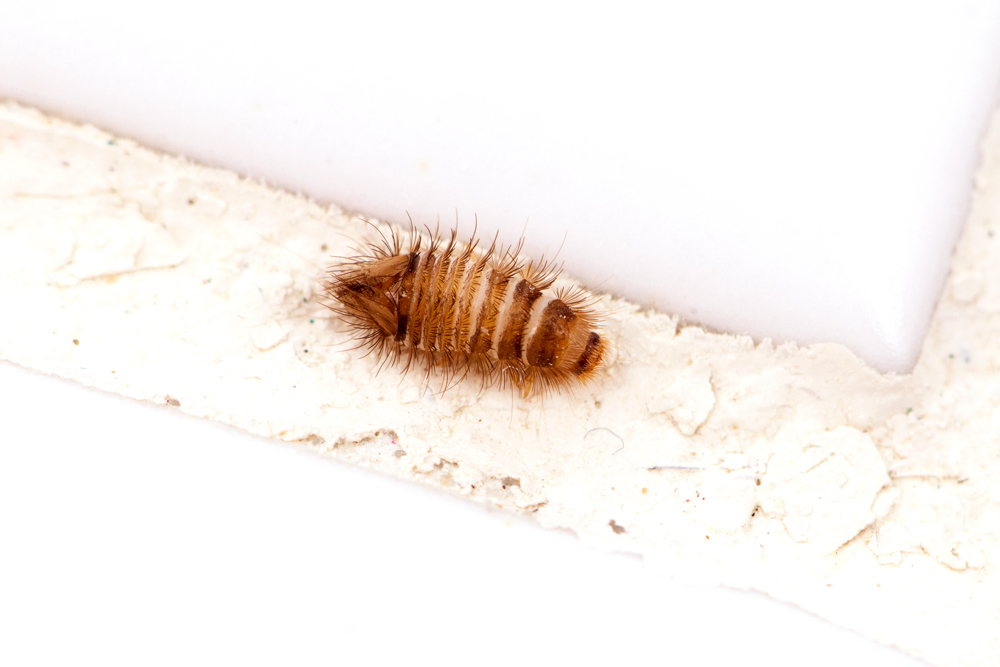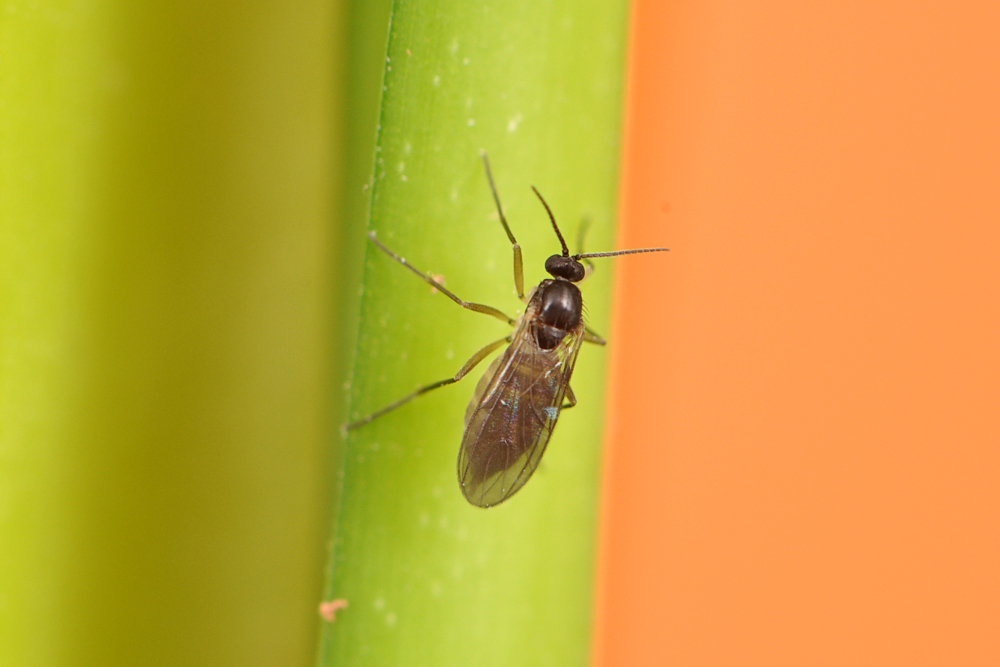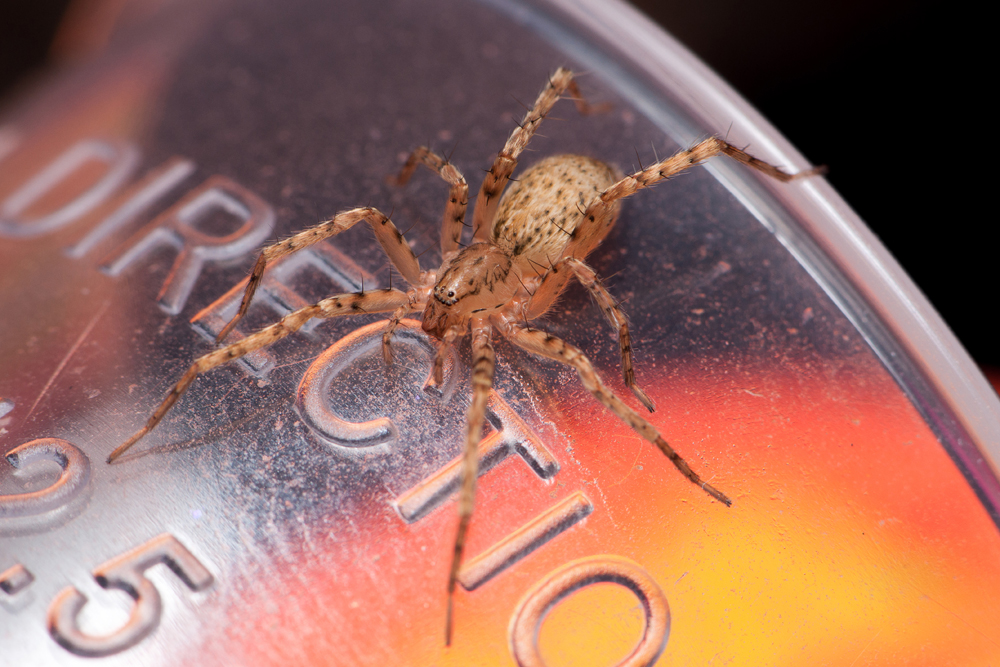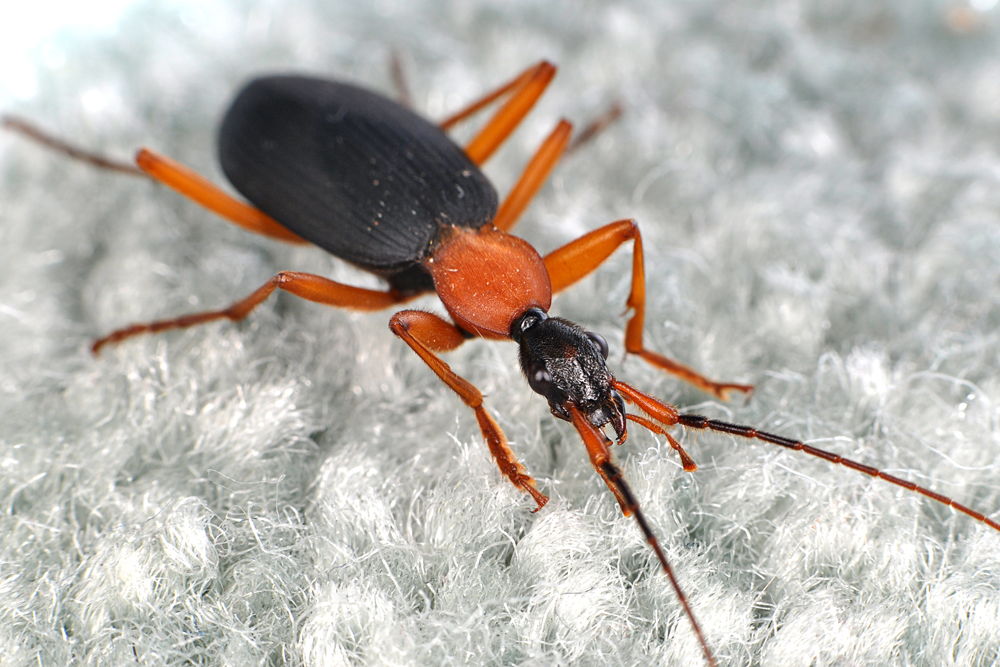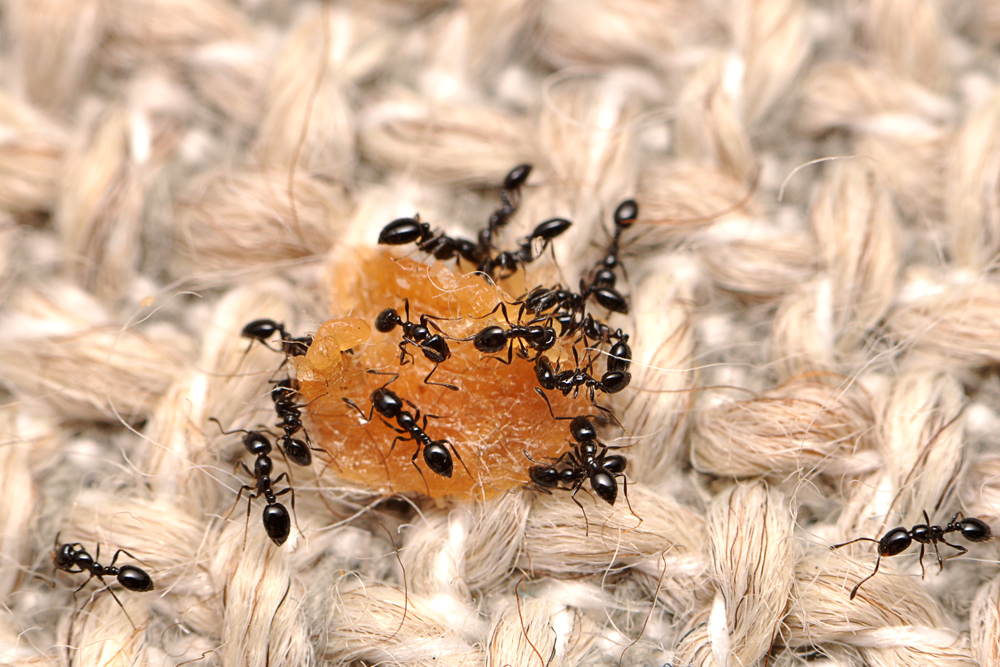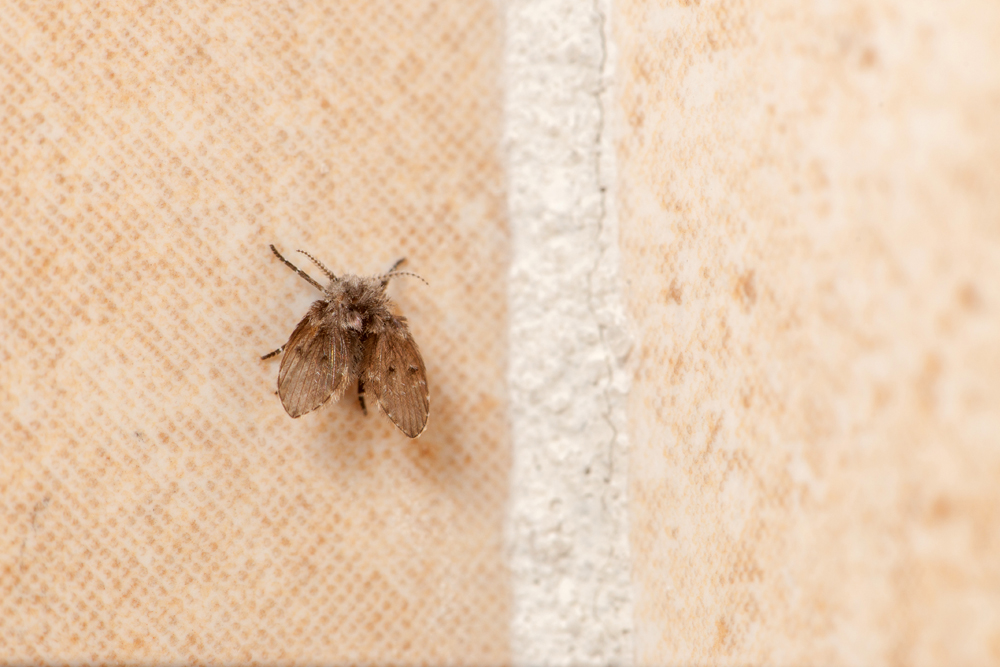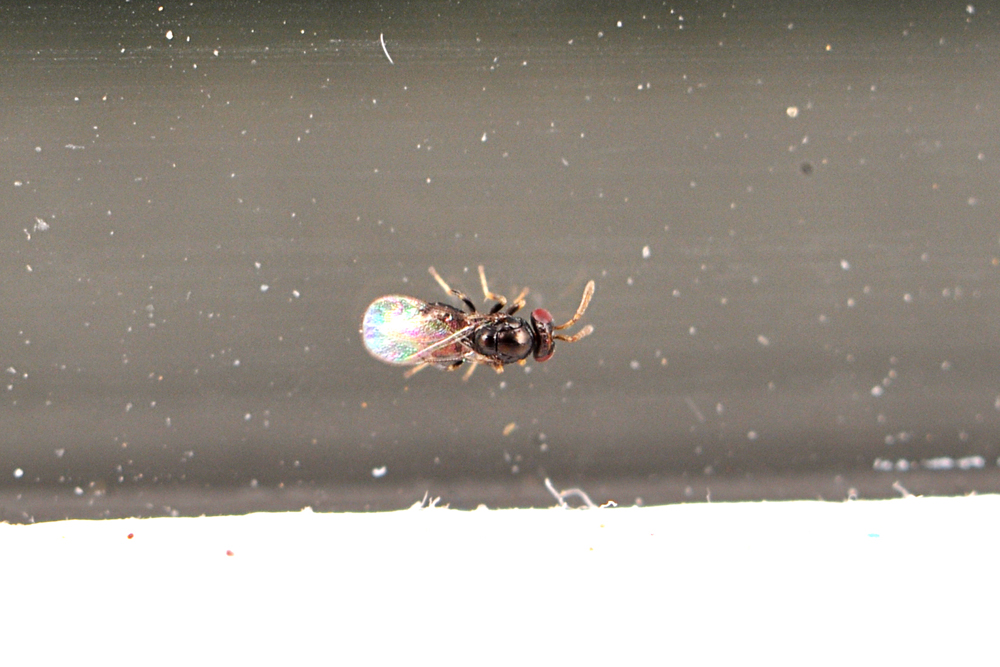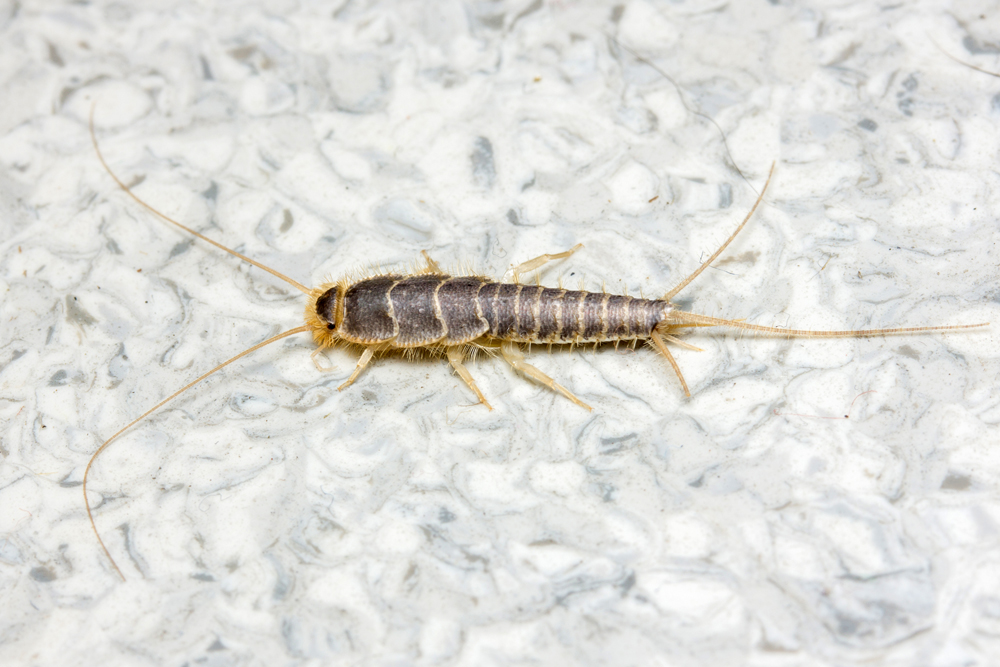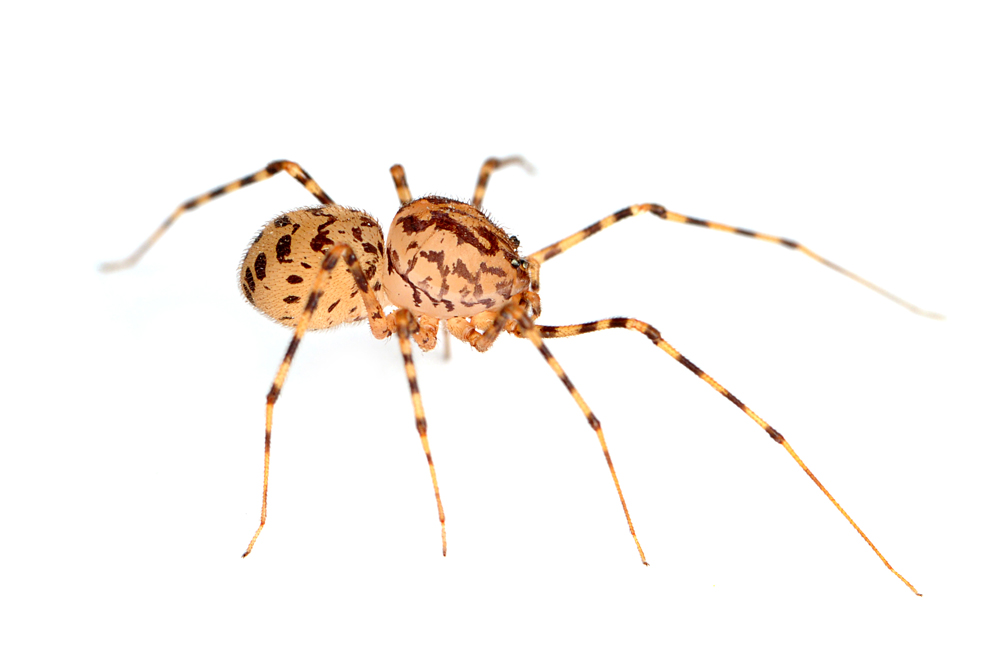Photos: 15 Insects and Spiders That May Share Your Home
While many multi-legged creatures may share our homes, not all of them are pests. Some are beneficial because they eat pest insects. But, even more are simply "invisible," living quietly out of sight in the corners and concealed dark spaces in rooms around the house. In fact, you may already have several of these "roommates," even if you've never seen them. Here are 15 examples found in a recent study that analyzed the diversity of arthropod life in homes. [Read the full story: Hundreds of Tiny Bugs Are Probably Hiding in Your Home]
Book louse
Book lice (Liposcelididae) are tiny insects found in many habitats, often in animal nests and human homes. They are related to true parasitic lice but instead of blood and skin, book lice feed on molds, dead insects, stored food products and other bits of organic matter. This individual is crawling on a piece of paper with 4-point font. (Credit: Matt Bertone)
Camel cricket
Camel crickets (Rhaphidophoridae) are typically denizens of basements and crawl spaces where they feed on various organic matter. Their long antennae help guide them in the darkness, while their long legs allow them to jump great distances. Although they may look scary, they are harmless. Shown here is the greenhouse camel cricket (Diestrammena asynamora), which is non-native to the U.S. but has become widespread in homes. (Credit: Matt Bertone)
Carpet beetle larva
Like tiny pipe cleaners, carpet beetle larvae (Dermestidae) are covered in many hairs. These hairs are specially modified to interfere with predators, clogging up the mouths of would-be hunters. Carpet beetle larvae typically feed on wool and other hair, feathers, and dead insects. (Credit: Matt Bertone)
Get the world’s most fascinating discoveries delivered straight to your inbox.
Carpet beetle
Adult carpet beetles (Dermestidae) are small round insects that are covered in colorful scales. After living out their lives as larvae, they prefer to travel away from homes, but often end up dying on windowsills. Out in nature they can sometimes be found on flowers, feeding on pollen and nectar. (Credit: Matt Bertone)
Cellar spider
Cellar spiders (Pholcidae), sometimes called daddy-longlegs, are thin-legged and reside in webs. They are often found in basements and crawl spaces, but also live elsewhere in homes. Although they feed on small arthropods that they capture in their webs, they are also known to invade the webs of other spiders to eat the residents. (Credit: Matt Bertone)
Cobweb spiders
Cobweb spiders (Theridiidae), like this male (left) and female (right) house spider (Parasteatoda tepidariorum), are common members of the household arthropod fauna. They create irregular webs, which have trip wires to the ground. When crawling insects come into contact with these tight strands, the connection is broken and the prey gets pulled into the web. (Credit: Matt Bertone)
Dark-winged fungus gnats
Some of the most commonly found insects in homes are dark-winged fungus gnats (Sciaride). Many come from the soil of overwatered houseplants or compost bins. They can be an annoyance, but do not bite. (Credit: Matt Bertone)
Ghost spider
There are a variety of hunting spiders that do not make webs to capture prey, but instead roam around actively searching for food. These types of spiders can be common in homes, crawling along the floor or up walls. One such spider is the ghost spider (Anyphaenidae), shown here. (Credit: Matt Bertone)
Ground beetle
Ground beetles (Carabidae), such as this false bombardier beetle (Galerita sp.), are happy out in nature, but will often wander into homes and roam around looking for prey (or a way to make it back outside.) They will feed on many types of small arthropods, ripping them apart with powerful mandibles. (Credit: Matt Bertone)
House centipede
With so many legs, house centipedes (Scutigera coleoptrata) are the stuff of nightmares. In reality, they are harmless and will try their best to avoid humans. House centipedes are extremely fast and active hunters, especially enjoying cockroaches and flies for meals. Shown here is a juvenile. (Credit: Matt Bertone)
Little black ants
A variety of ants (Formicidae) can commonly be found in homes. These social insects often form trails of workers looking for food and water. Here, a search party of little black ants (Monomorium minimum) finds food on a couch. (Credit: Matt Bertone)
Moth fly
Also called drain flies, moth flies (Psychodidae) are similar to small moths, but are in fact true flies. Their larvae inhabit pipes and drains where they feed on the muck and organic matter that builds up. For this reason, adults are often found in bathrooms. The adults are harmless and do not bite. (Credit: Matt Bertone)
Parasitoid wasp
There are many tiny (to microscopic) wasps referred to as “parasitoids” because they are parasites whose larvae kill their host. Some of these wasps attack groups that live in homes, such as spiders, cockroaches, and carpet beetle larvae. (Credit: Matt Bertone)
Silverfish
Silverfish (Lepismatidae) are ancient insects that lack wings and have shiny scales all over their body. They are well adapted to living in homes because they can survive on low nutrient materials such as crumbs, dead insects, and even glues, paper and leather. (Credit: Matt Bertone)
Spitting spider
Among the most interesting spiders are spitting spiders (Scytodidae). Unlike any other spiders, they have an extra pair of silk glands in their head, attached to their venom glands. This allows them to spit a venomous silk on their prey, tying it up so the spider can delicately bite the food item. Shown here is Scytodes thoracica, a native of Europe that has been transported around the world and can be found in homes. (Credit: Matt Bertone)
Follow Mindy Weisberger on Twitter and Google+. Follow us @livescience, Facebook & Google+.

Mindy Weisberger is a science journalist and author of "Rise of the Zombie Bugs: The Surprising Science of Parasitic Mind-Control" (Hopkins Press). She formerly edited for Scholastic and was a channel editor and senior writer for Live Science. She has reported on general science, covering climate change, paleontology, biology and space. Mindy studied film at Columbia University; prior to LS, she produced, wrote and directed media for the American Museum of Natural History in NYC. Her videos about dinosaurs, astrophysics, biodiversity and evolution appear in museums and science centers worldwide, earning awards such as the CINE Golden Eagle and the Communicator Award of Excellence. Her writing has also appeared in Scientific American, The Washington Post, How It Works Magazine and CNN.


